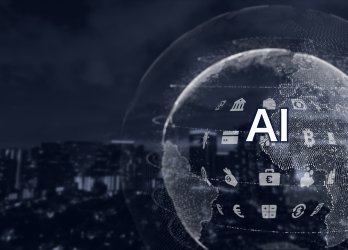We’ve all seen how AI has taken the tech world by storm, right? From GitHub Copilot to ChatGPT, AI is helping us code faster, write better, and solve problems we didn’t even know we had. But with all these advancements, there’s a growing concern that’s hard to ignore – the need for more rigorous human validation. Yes, you heard it right. As AI gets smarter, our job as testers becomes even more critical. Let’s dive into why this is the case.
The Rise of AI in Everyday Tools
First off, let’s talk about the incredible rise of AI in our everyday tools. Remember the days when coding meant endless hours of debugging and figuring out why your script wasn’t running? Now, AI-driven tools like GitHub Copilot can auto-complete entire lines of code for us. It’s like having a super-smart buddy who never sleeps and always knows the answer.
But here’s the kicker – these AI tools, while amazing, are not perfect. They are trained on vast amounts of data and can sometimes make mistakes. These aren’t just any mistakes; they can be bizarre or even dangerous. Imagine an AI suggesting a coding practice that introduces a security vulnerability or a bias in a decision-making algorithm. Scary, right?
The Dark Side of AI: Bias and Hallucinations
Let’s get into some of the darker aspects of AI – bias and hallucinations. AI systems learn from data, and data is often biased. If an AI is trained on biased data, it’s going to perpetuate those biases. For example, an AI trained on historical hiring data might unfairly favor candidates from certain backgrounds, perpetuating inequality. This is where human oversight is indispensable. Then there are AI hallucinations – no, not the psychedelic kind. AI hallucinations happen when the AI starts generating responses that are completely off the mark. Imagine asking an AI for medical advice and getting something dangerously incorrect. Alarming!
More AI, More Scrutiny
Now, here’s the heart of the matter: as AI applications become more sophisticated and widespread, we need to scrutinize them more rigorously. Why? Because the stakes are higher. A mistake in a traditional software application might cause inconvenience, but a mistake in an AI-driven application can cause real harm.
Think about self-driving cars. The AI driving these vehicles needs to be flawless because lives are literally on the line. If the AI makes a wrong decision, it could lead to accidents. Human testers must rigorously test these systems under countless scenarios to ensure they’re safe and reliable.
Human Validation: The Unsung Hero
So, where do we, the human testers, fit into this AI-driven world? Well, we’re the unsung heroes. We bring something to the table that AI currently lacks – judgment and ethics. We can spot when something just doesn’t feel right, something an AI might miss because it doesn’t “feel” anything. Our job is evolving. We’re no longer just looking for bugs in the code; we’re looking for flaws in the AI’s logic, biases in its decisions, and potential hallucinations. We’re ensuring that the AI’s decisions are fair, ethical, and accurate.
Practical Steps for Enhanced Validation
Okay, enough of the philosophical discussion. Let’s get down to brass tacks. How can we enhance our validation processes in this AI era?
- Diverse Data Sets: Ensure AI is trained on diverse and representative data sets to minimize bias. This means actively seeking out data that covers a wide range of scenarios and perspectives.
- Rigorous Testing Scenarios: Test AI applications in a variety of scenarios, including edge cases. Think of every possible way the AI could be used (or misused) and test it.
- Human-in-the-Loop: Incorporate human oversight at critical points in the AI decision-making process. This could be periodic reviews of AI decisions or having a human validate high-stakes decisions.
- Transparency and Explainability: Ensure that AI decisions are explainable. If an AI makes a decision, there should be a clear, understandable reason behind it. This helps in identifying and correcting biases and errors.
- Ethical Considerations: Always keep ethics in mind. Just because an AI can do something doesn’t mean it should. We need to weigh the benefits against potential harm.
The Future of AI Testing
The future of AI and software testing is intertwined. As AI continues to evolve, so will our roles as testers. We’ll need to stay ahead of the curve, continuously learning and adapting our methods. It’s an exciting time to be in this field because we’re not just testers – we’re guardians of ethics and fairness in the AI age.
So, there you have it. AI is transforming our world in incredible ways, but it also brings new challenges that require our vigilant oversight. Our role as human testers is more important than ever to ensure that these AI systems are not only functional but also fair, ethical, and free from harmful biases and hallucinations.
Let’s embrace this challenge with enthusiasm and a commitment to excellence. After all, the future of AI isn’t just in the hands of developers – it’s in our hands too. Keep testing, keep validating, and most importantly, keep making the digital world a better place!

